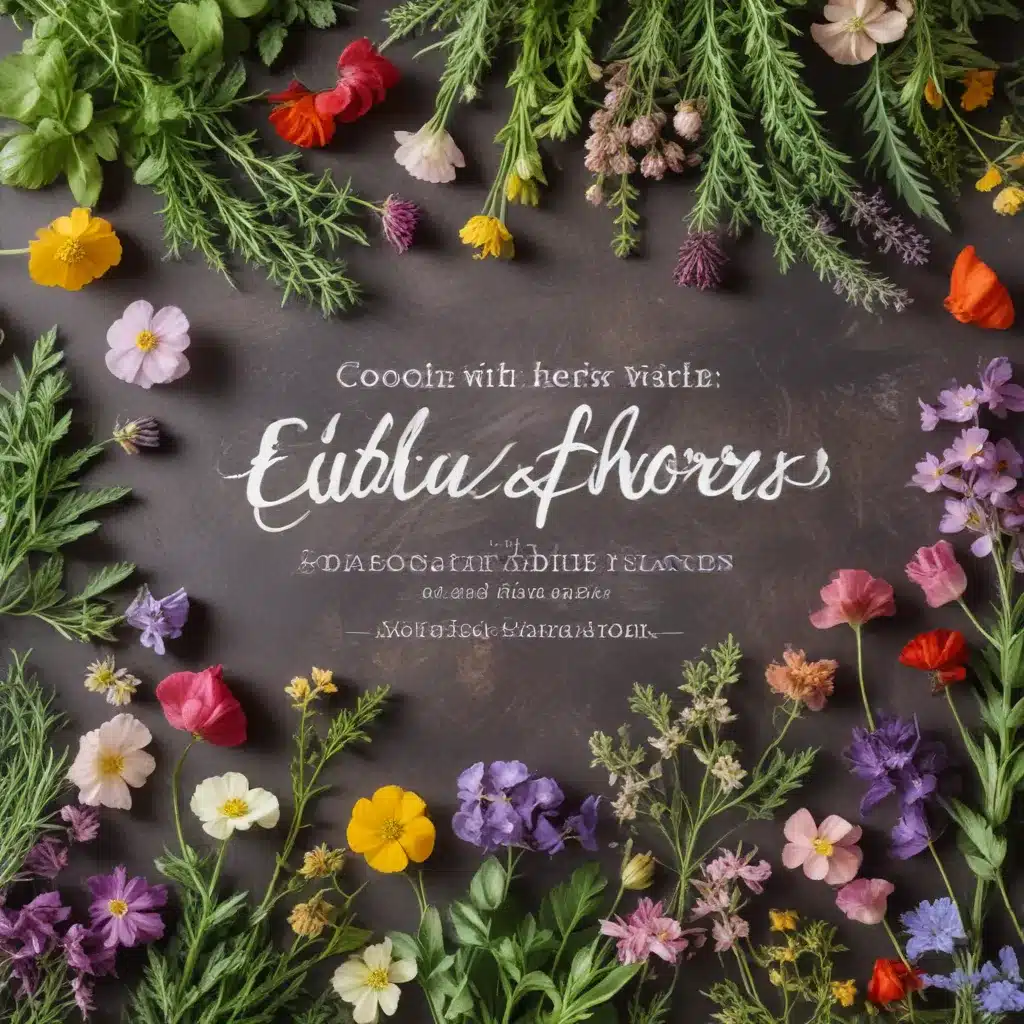
Cooking with Herbs and Edible Flowers: Flavors from the Garden
As the director of education at Crooked Pines Farm, I’m constantly exploring new ways to engage our visitors with the wonders of the natural world. And few things capture the imagination quite like the vibrant colors and tantalizing aromas of fresh herbs and edible flowers. Whether you’re a seasoned gardener or just starting to dabble in homegrown produce, these versatile ingredients can transform your cooking and elevate your meals to new heights.
Diverse Herbs and Their Culinary Applications
At the heart of any well-stocked kitchen, you’ll find an abundance of fragrant, flavorful herbs. From the bold, peppery punch of oregano to the delicate, licorice-like notes of tarragon, these aromatic plants offer a world of culinary possibilities. Savory herbs, like rosemary, thyme, and sage, lend depth and complexity to hearty dishes, while delicate, fragrant herbs, such as basil, cilantro, and mint, can brighten up salads, sauces, and even desserts.
Not only do herbs elevate the flavor of your meals, but they also bring a touch of natural beauty to the table. Imagine the vibrant green of freshly snipped chives or the delicate purple hues of lavender blossoms adorning your plate. These edible garnishes don’t just look stunning; they also impart subtle, nuanced flavors that can take your dishes to new heights.
Edible Flowers: Bringing Vibrant Flavors to the Kitchen
As you wander through the gardens at Crooked Pines, you’ll encounter a dazzling array of edible flowers, each with its own unique flavor profile. From the peppery kick of nasturtiums to the sweet, honey-like taste of chamomile, these vibrant blooms can infuse your culinary creations with a touch of whimsy and charm.
Edible flowers aren’t just for decoration, though their visual appeal is undeniable. Many of these petals and blossoms can be incorporated directly into dishes, lending a delicate floral essence to salads, soups, and even cocktails. Imagine the delight of biting into a pansy-infused sugar cookie or sipping a refreshing hibiscus-infused lemonade.
Beyond their culinary applications, edible flowers can also be used to create stunning garnishes and eye-catching accents. Sprinkle a few marigold petals over a colorful vegetable medley or nestle some borage blossoms into an elegant cheese board for a truly breathtaking presentation.
Cultivating Ingredients from the Garden
As with any culinary pursuit, the key to unlocking the full potential of herbs and edible flowers lies in understanding how to grow and harvest them. At Crooked Pines Farm, we encourage our visitors to get their hands dirty and dive into the art of herb gardening.
Whether you have a sprawling backyard or a cozy windowsill, creating an herb garden is a rewarding and accessible project. Start by selecting the herbs that pique your interest, whether that’s the robust, earthy flavor of rosemary or the refreshing aroma of lemon thyme. Arrange your raised beds or containers in a spot that receives ample sunlight, and be sure to provide well-draining soil and consistent watering to ensure your herbs thrive.
Foraging for edible flowers can be a delightful adventure, but it’s crucial to approach the task with caution and care. Before venturing out, be sure to familiarize yourself with the safe, edible varieties that grow in your region. Ethical foraging practices, such as leaving plenty of blooms behind and avoiding areas that may have been treated with pesticides, are essential for maintaining the health of local ecosystems.
Flavor Pairing and Culinary Creativity
As you delve into the world of herbs and edible flowers, you’ll discover a wealth of flavor combinations just waiting to be explored. Understanding the unique taste profiles of these ingredients is the key to unlocking their full potential in the kitchen.
Complementary taste combinations, such as the bright, citrusy notes of marigolds paired with the herbal, peppery essence of nasturtiums, can create a harmonious balance on the palate. Experimenting with contrasting flavors, like the sweet, floral charm of violets against the earthy, savory character of thyme, can also lead to delightful and unexpected culinary discoveries.
With a little creativity and a keen eye for flavor, you can transform your garden-fresh herbs and flowers into a wide array of delectable dishes. Imagine a vibrant salad adorned with pansies and chive blossoms, or a sophisticated main course featuring a fragrant herb-infused compound butter. And for the perfect finale, why not try your hand at a lavender-infused lemon bar or a rose-petal-sprinkled cake?
Nutritional Benefits of Herbs and Edible Flowers
Beyond their captivating flavors and visual appeal, herbs and edible flowers also offer a wealth of nutritional benefits. Many of these plant-based ingredients are rich in antioxidants and phytochemicals, which can support overall health and well-being.
Incorporating these nutrient-dense ingredients into your daily meals can be an easy way to boost the dietary diversity of your diet. From the anti-inflammatory properties of turmeric to the soothing, digestive-aiding effects of chamomile, the medicinal and therapeutic potential of these garden gems is truly remarkable.
Whether you’re a seasoned home cook or just starting to explore the culinary world, the integration of herbs and edible flowers into your meals can be a transformative experience. By tapping into the vibrant flavors and stunning visual appeal of these natural wonders, you can elevate your dishes, nourish your body, and connect more deeply with the abundance of the earth.
So, the next time you step into the garden, be sure to keep an eye out for the hidden gems that can lend their unique flair to your culinary creations. From the aromatic basil to the captivating nasturtiums, the flavors of Crooked Pines Farm are waiting to be discovered and savored.


